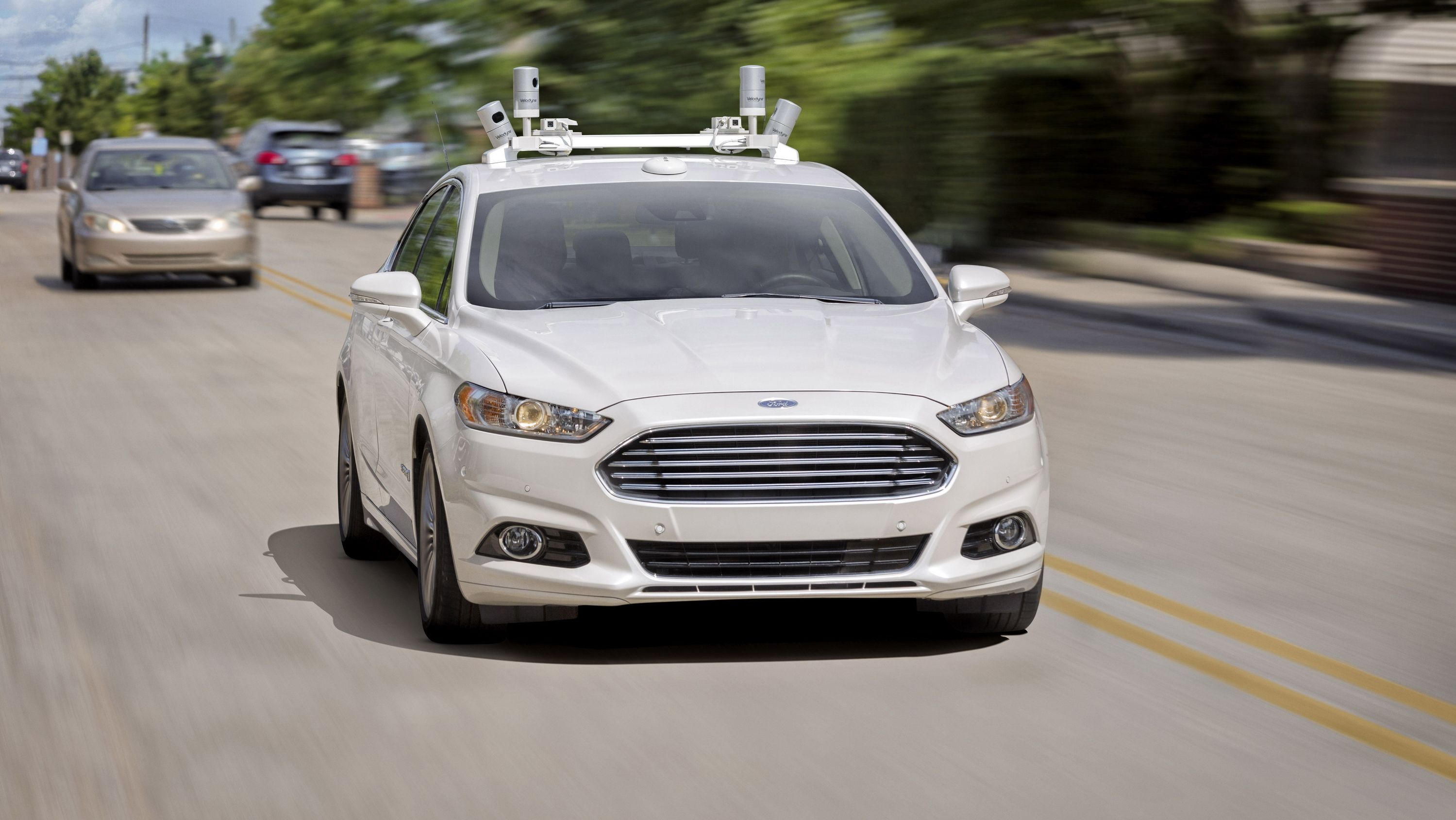Ford has laid the gauntlet as far as autonomous driving technology is concerned after announcing a 2021 hard date on its plan to roll out fully autonomous vehicles without a steering wheel or pedals. It’s a bold move that circumvents the self-assisted driving technology that other firms like Tesla are doing, but the Blue Oval seems confident in its abilities and resources to have these vehicles out in five years for ride-hailing and ride-sharing purposes.
So while it still represents a big leap from self-assisted driving technology, Ford isn’t going for all the marbles in offering consumers a fully autonomous vehicle. That’s still part of the company’s plan in the long run, but over the short term, the objective is to expose its autonomous driving cars to the ride-sharing industry. A big part of that plan is develop vehicles that meet the SAE Level 4 standard of automation, which provide cars with abilities to handle all aspects of driving by itself that’s limited to a specific set of approved areas or regions. That setup works perfectly with ride-sharing companies like Uber, which, from the looks of it, will be one of the automaker’s target markets.
Ken Washington, Ford’s VP of Research and Advanced Engineering, explained the company’s rationale to The Verge, saying that “in a ride service, you could imagine that the defined environment or area might be large enough to take a customer from a city center to an airport or a seaport. Depending on how much of that environment can you capture in your high resolution map, you can define the area that you’re going to service with the vehicles."
In a lot of ways, Ford’s strategy is not unlike what General Motors is doing. The General has also announced plans to develop autonomous driving cars for commercial services. Tech giant Google is in on the same boat as it already has a test car with no steering wheels and pedals. Even Uber, presumably one of Ford’s future clients for its autonomous driving vehicles, is developing its own technology for the same exact purpose.
Only time will tell if Ford can live up to its set timetable but given how the industry itself has evolved into making autonomous driving technology its own top priority, we can all be sure that Blue Oval will have all hands on deck to get its technology up and running by 2021.
Continue after the jump to read the full story.
Why it matters
It’s nice to see Ford make its plans known and just as important, set a concrete timetable on when it plans to roll out these autonomous driving cars. It takes a lot of courage to lay down these plans to the public because of the resulting pressure that’s inevitably going to come with it. Make no mistake, a lot of people will be looking at Ford closely from now on to see if it’s going to be on schedule with these plans.
The good thing is that the company appears to be well-equipped to handle it considering the recent business partnerships and acquisitions it has made that are all related to the development of its autonomous driving technology. From investments in LIDAR sensors manufacturer Velodyne to 3D-mapping company Civil Maps, the company is putting together a team of partners with specific specializations that can help accelerate the development of the tech. In addition, Ford has also acquired SAIPS, a computer vision and machine learning software, partnered with Nirenberg Neurscience, LCC, a “virtual retina” technology company, and has even set expansion plans for its own research and innovation center in Palo Alto, California.
That tells you that Ford is preparing itself for the challenge that lies ahead. It’s not going to be an easy one – there’s also that separate and equally important issue of getting the right legislation to legalize these cars on the road – but if what the company has been doing to beef up its resources is an indication of what’s the come, Ford is dead serious about meeting what amounts to a self-imposed 2021 deadline.

